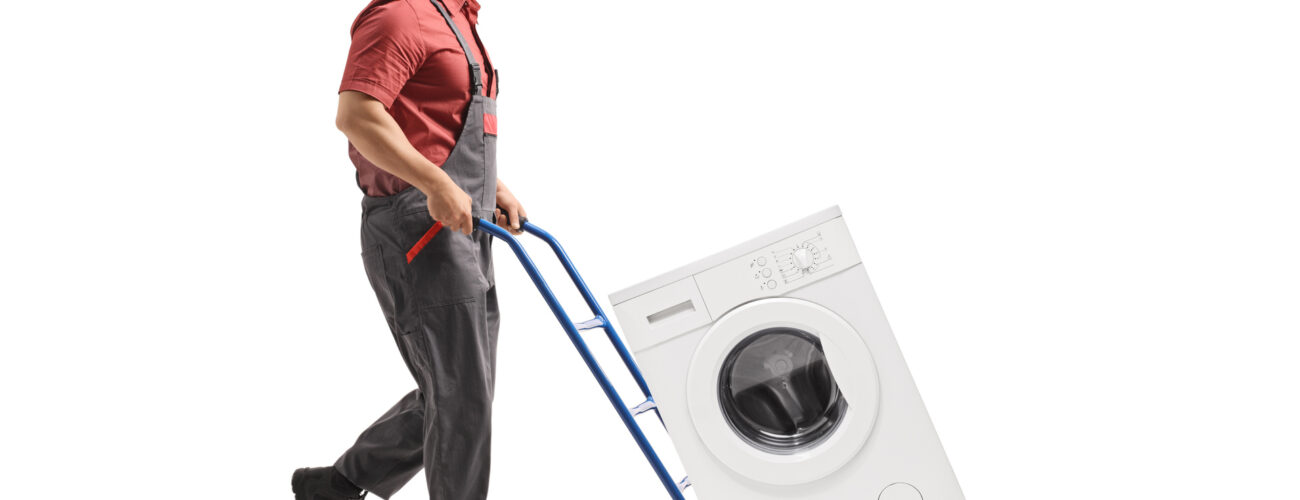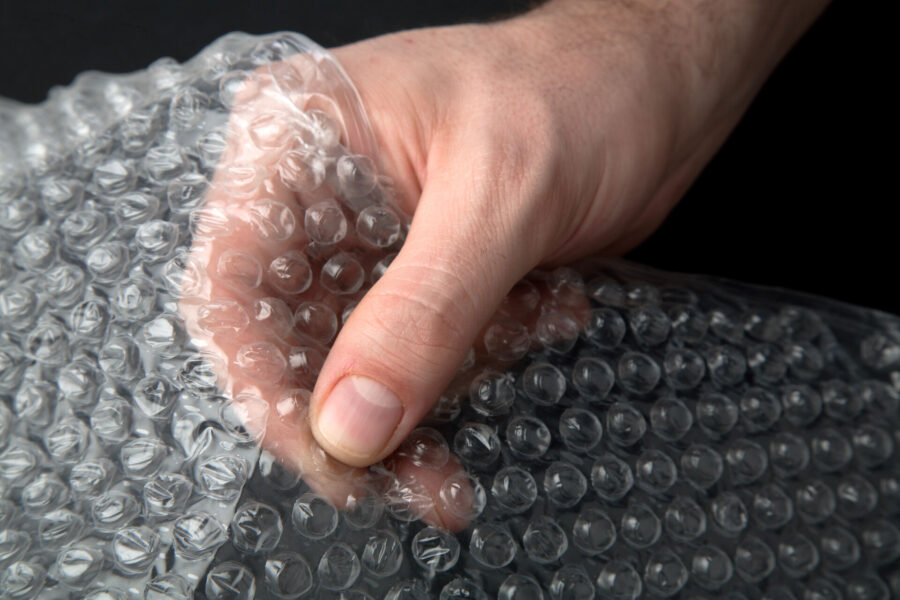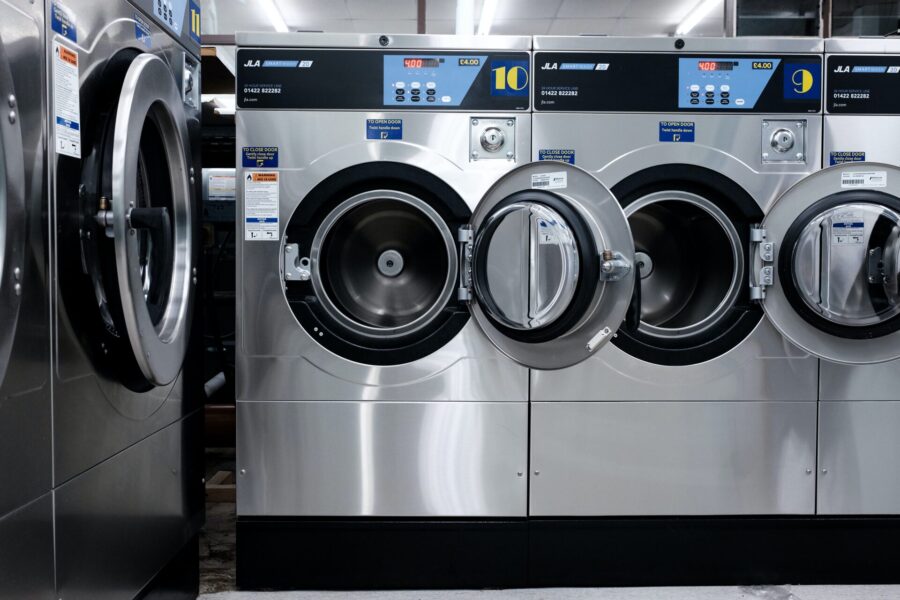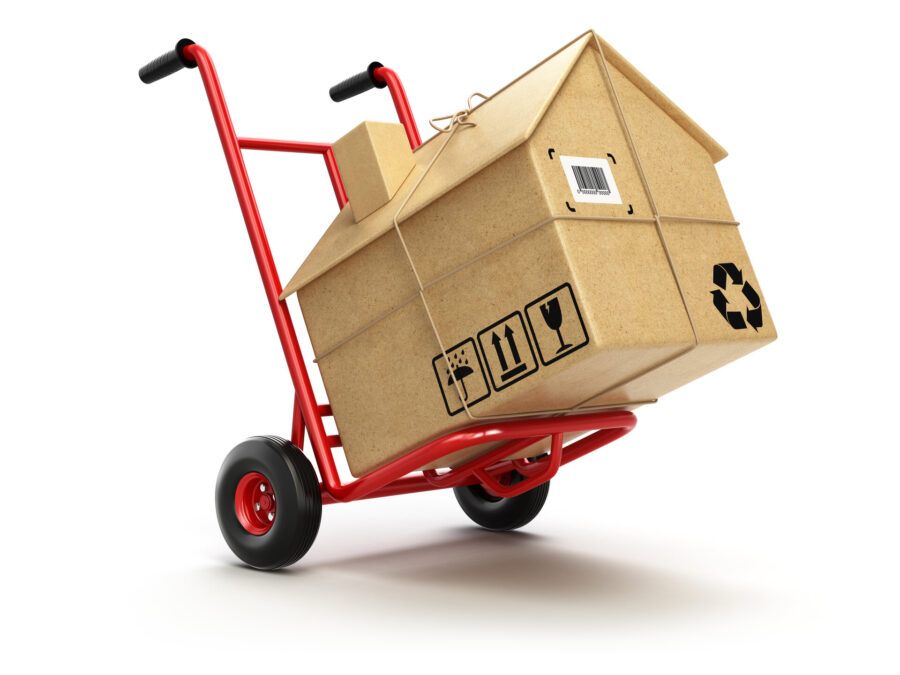

How to Move a Washing Machine – Strategies for a Smooth Relocation
Posted in How-to,Moving Tips & Tricks on May 12, 2023
If you were wondering how to move a washer, you should know that it’s a bulky and heavy appliance that requires special care and attention to avoid damage during transport, so it might get tricky. So, here are some tips on how to move a washing machine, including how to prepare it for transport, how to safely load and unload it, and how to reinstall it in your new home.
The Importance of Careful Planning When Moving a Washing Machine
Careful planning is crucial when planning how to move washing machine to ensure that the process goes smoothly and without any damage to your item or property. Washing machines are heavy and bulky, and they also have delicate and complex components that require special handling. Without proper planning, relocating one can be a stressful and challenging experience.
One important aspect of planning is to prepare the appliance for transportation. This involves disconnecting the water and power supply, draining the remaining water from the hoses, and securing any loose parts. It is also important to measure its dimensions and the space it will be moved through to ensure that it can fit safely and easily.
In addition, it is important to take precautions during the actual relocation. This includes using proper lifting techniques to avoid injury, protecting the walls and floors from damage, and using a dolly or other lifting aid to help navigate stairs and other obstacles.
How to Prepare a Washing Machine for Moving
This is an essential step to ensure that the washer arrives at its destination in good condition. This involves several tasks, such as unplugging and disconnecting it from its power and water supply, draining any remaining water from the hoses, and securing any loose parts. Here are some steps you should follow.
Unplugging and Disconnecting From Water Supply
Before relocating an appliance, it is important to unplug and disconnect it from its water supply. To do this, turn off the water supply valve and unplug the appliance from the power outlet. Then, use pliers to loosen the hose connections and disconnect the hoses from the appliance. Be sure to place a towel or bucket under the hoses to catch any remaining water.
How to Drain a Washing Machine for Moving
Once the hoses are disconnected, it is important to drain any remaining water. To do this, run a spin cycle with no clothes inside. This will help remove any water that may still be inside. If there is still water inside the hoses, use a wet/dry vacuum or towels to remove it.
Securing and Protecting Internal Components
Washing machines have delicate internal components that can become damaged during transport, just like any other fragile item. To protect these components, it is important to secure them before transport. This can be done by inserting packing materials, such as bubble wrap or foam peanuts, around the drum and other internal components. This will help prevent them from shifting during transport and becoming damaged.

Moving a Front Load Washer vs. Moving a Top Load Washer
Relocating a front load washer and a top load washer can have some differences in the process, but the basic steps remain similar. However, due to their different designs, there are some considerations to keep in mind when transporting each type.
Front-load washers are typically heavier and bulkier than top-load ones, and they are also more sensitive to movement. The drum in a front load washer is typically suspended on springs and shock absorbers, which can be easily damaged during transport. To prevent damage, it is important to secure the drum before transport. This can be done by inserting protective materials, such as bubble wrap or packing paper, around the drum to prevent it from bouncing around during transport.
Top load washers, on the other hand, are often top-heavy and can be more unstable during transport. It is important to secure them properly to prevent them from tipping over during transport. This can be done by inserting protective materials around the sides and top of the box. Regardless of the type of washing machine, it is important to follow the same basic steps when preparing for transport.

How to Pack a Washing Machine for Moving
When relocating an appliance, it is important to pack it properly to prevent damage during transport. This involves using the right materials, techniques, and strategies to protect the machine’s delicate components and exterior. Here are some steps to follow to help you relocate efficiently.
Materials Needed for Safe and Secure Packing
You will need materials such as bubble wrap, packing tape, relocation blankets, and a dolly. You may also need a box or crate to protect the control panel and other delicate components. It is important to use high-quality packing materials to ensure that your item is protected during transport.
Steps to Protect the Exterior and Prevent Damage During Transport
The first step in packing washing machines is to protect the exterior from scratches, dents, or other damage during transport. This can be done by covering the appliance with relocation blankets or other protective material. Secure the blankets in place using packing tape or other means to ensure that they do not shift during transport.

How to Move a Washing Machine by Yourself
Relocating washing machines by yourself can be challenging, but it is possible with the right techniques and precautions. Here are some steps to follow if you decide you’re brave enough to do it by yourself.
Safety Considerations and Necessary Precautions
Before attempting to relocate a washing machine by yourself, it is important to consider your own physical abilities and limitations. Washing machines are heavy and bulky, and attempting to move one without proper precautions can lead to injury. To prevent injury, wear sturdy shoes with good traction and use gloves to protect your hands. When lifting it, be sure to use proper lifting techniques. Bend at the knees and lift with your legs rather than your back.
Tips for Moving a Washer With Minimal Assistance
If you are relocating appliances like washing machines by yourself, it can be helpful to use a dolly or other relocation aid to minimize the amount of physical effort required. It’s one of the best relocation hacks out there. Before lifting the washer onto the dolly, wrap it in protective material such as bubble wrap or relocation blankets.
Use straps or bungee cords to secure it onto the dolly and wheel it to the relocation truck or your desired location. When navigating stairs or other obstacles, be cautious and take your time. If possible, enlist the help of a friend or family member to assist you in lifting the machine up or down stairs.
How to Move a Washing Machine With a Dolly
Using a dolly to relocate a washer can make the process much easier and safer. A dolly is a two-wheeled cart that can be used to transport heavy items such as appliances, so here are some steps to follow when using it.
Choose the Right Dolly for Your Washer Type
It is important to choose the right type of dolly for your washer. There are several types of dollies available, including furniture dollies, appliance dollies, and hand trucks. Appliance dollies are typically the best choice for shipping machines, as they are designed specifically for this purpose and have straps or other securing devices to keep them in place.
When choosing an appliance dolly, be sure to select one appropriate for the size and weight. Look for a dolly with a weight capacity that is greater than the weight of your washer, and check the dimensions to ensure that the dolly is large enough to accommodate your machine.

Moving a Washing Machine Into Your New Home
Transporting an appliance into your new home can be a daunting task, but with proper planning and precautions, it can be done safely and effectively.
How to Navigate Stairs, Doorways, and Tight Spaces
When transporting a washer into your new house, it is important to navigate stairs, doorways, and other tight spaces carefully. Begin by measuring the dimensions of the appliance and the space it will be moved through to ensure that it can fit safely and easily. If necessary, remove any obstacles or furniture pieces that may be in the way.
When navigating stairs, use a dolly to help lift the machine up or down each step. Be sure to use caution and take your time, to avoid jostling or tipping the machine. When navigating through doorways or tight spaces, tilt the machine back on its dolly to help maneuver it through the space.
Properly Reconnect and Test the Washer
Once the washer has been moved into its new location, it is important to properly reconnect it to its power and water supply. Begin by connecting the hoses, making sure to tighten the connections securely. Then, connect the hoses to the water supply, and turn on the water supply valve.
Next, plug the machine into a power outlet, and turn it on to test it. Run a short cycle with no clothes inside to ensure that the machine is working properly and there are no leaks or other issues. If everything checks out, you can begin using it as normal.
Here is a video to demonstrate some of the things talked about here.
When to Seek Professional Help From Cross Country Movers
While transporting a washing machine on your own can save money, it can also be a challenging and time-consuming process. In some cases, it may be best to seek professional help from long-distance movers. Here are some situations in which it may be best to seek professional help:
- Long-distance move: If you are moving cross country, it may be difficult to transport appliances safely and efficiently on your own.
- Large or heavy machines: If your washer is especially large or heavy, it may require specialized equipment and expertise to move it safely.
- Limited time or resources: If you are short on time or resources, it may be more practical to hire professional movers to handle the relocation for you.
- Lack of experience: If you don’t have the experience or are unsure about the proper techniques and precautions, it may be best to seek professional help to avoid relocation mistakes or injury.
Tips for Finding and Hiring Reliable Cross-Country Moving Services
If you decide to hire professional cross-country movers to help you pack efficiently and ship your belongings, it is important to choose a reliable relocation company. Here are some tips for finding and hiring reliable movers for their cross-country moving services:
- Research the company: Look for reviews and ratings from previous customers, and check the company’s credentials and licensing on reliable sites like the Better Business Bureau.
- Get multiple quotes: Get quotes from multiple relocation companies to compare prices and services.
- Ask for references: Ask the relocation company for references from previous customers, and contact them to ask about their experience with the company.
- Verify insurance coverage: Make sure that the long-distance moving company has proper moving insurance coverage to protect your belongings during transport.
- Read the contract carefully: Before signing a contract with a relocation company, read it carefully and make sure that you understand the terms and conditions.
You Can Make the Most of Your Move by Applying Tips and Calling Professionals
Moving across country is a difficult task, especially when it comes to shipping large items like washers, but with proper planning and precautions, you can ensure that the process goes smoothly and efficiently. However, if you don’t feel like doing it on your own and risking hurting your back, consider hiring packing services and letting professionals take care of your move.
Contact us and allow Cross Country Movers to safely transport all of your belongings. It’s the only way to enjoy a stress-free relocation and focus on other things like preparing for moving day.
FAQ
What Are the Steps to Prepare a Washing Machine for Relocation?
You should start by unplugging it and turning off the water supply. Drain any remaining water from the hoses and disconnect them from the appliance. If your washer has a pedestal, remove it and pack it separately. Secure any loose parts, such as the drum or agitator, and close the door.
How Can I Safely Disconnect My Washing Machine From Water and Power Sources?
To safely disconnect it from water and power sources, turn off the water supply and unplug it. Use pliers to loosen the hose connections and drain any remaining water. For the power supply, unplug the appliance from the wall outlet and turn off the circuit breaker that supplies power.
Are There Any Differences in Moving a Front Load Washer Versus a Top Load Washer?
There are some differences in relocating a front load washer versus a top load washer. Front-load washers tend to be heavier and more difficult to maneuver, while top-load washers can be top-heavy and unstable during transport. However, the basic steps for preparation and packing are similar for both types of machines.
What Materials Do I Need to Pack a Washing Machine for Moving?
To pack such a heavy appliance for transport, you will need high-quality protective materials such as bubble wrap, packing tape, blankets, and a dolly. You may also need a box or crate to protect the control panel and other delicate components.
Can I Move a Washing Machine by Myself, and What Precautions Should I Take?
It is possible to move it by yourself, but it is recommended to have a helper or professional assistance. When relocating the machine, be sure to use proper lifting techniques and protective equipment such as gloves and sturdy shoes.
How Can I Use a Dolly to Move a Washing Machine More Easily?
To use a dolly to relocate an appliance, place the dolly under it and secure it with straps or bungee cords. Tilt the appliance back onto the dolly and carefully wheel it to the desired location.
What Should I Consider When Navigating Stairs, Doorways, and Tight Spaces While Moving a Washing Machine?
When navigating stairs, doorways, and tight spaces while relocating a washing machine, be sure to measure the dimensions of the space and the machine. Use a dolly or other lifting aid to help navigate stairs, and be sure to protect the walls and floors from damage.
How Do I Properly Reconnect and Test My Washing Machine in My New Home?
To properly reconnect and test your appliance in your new home, connect the hoses and power supply and turn on the water and power sources. Run a cycle with no clothes to ensure there are no leaks or other issues.
When Should I Seek Professional Help for Moving a Washing Machine?
You should seek professional help if you are unsure of how to safely and properly move the machine yourself or if you are relocating long distance and need assistance with transportation and installation.
What Are Some Tips for Finding and Hiring a Reliable Moving Company for Moving a Washing Machine?
To find and hire a reliable relocation company, ask for referrals from friends and family, read reviews online, and check the company’s credentials and insurance. Get quotes from several companies and compare their services and pricing before making a decision.






